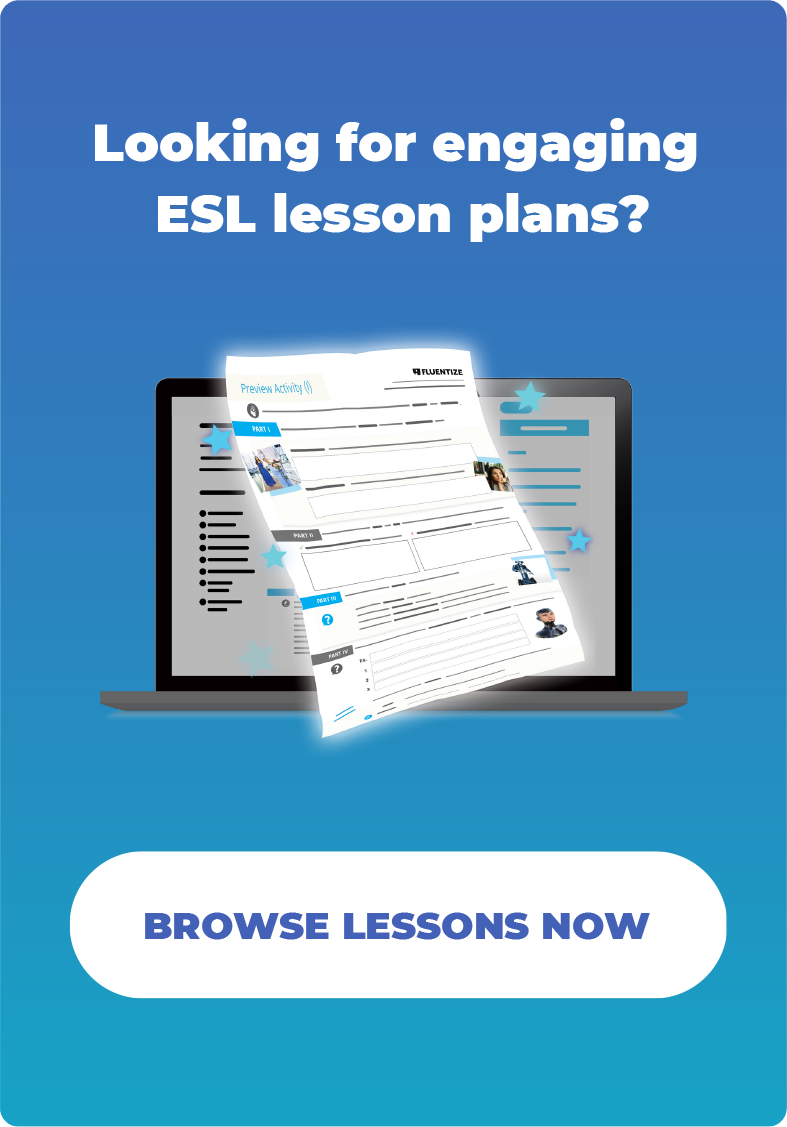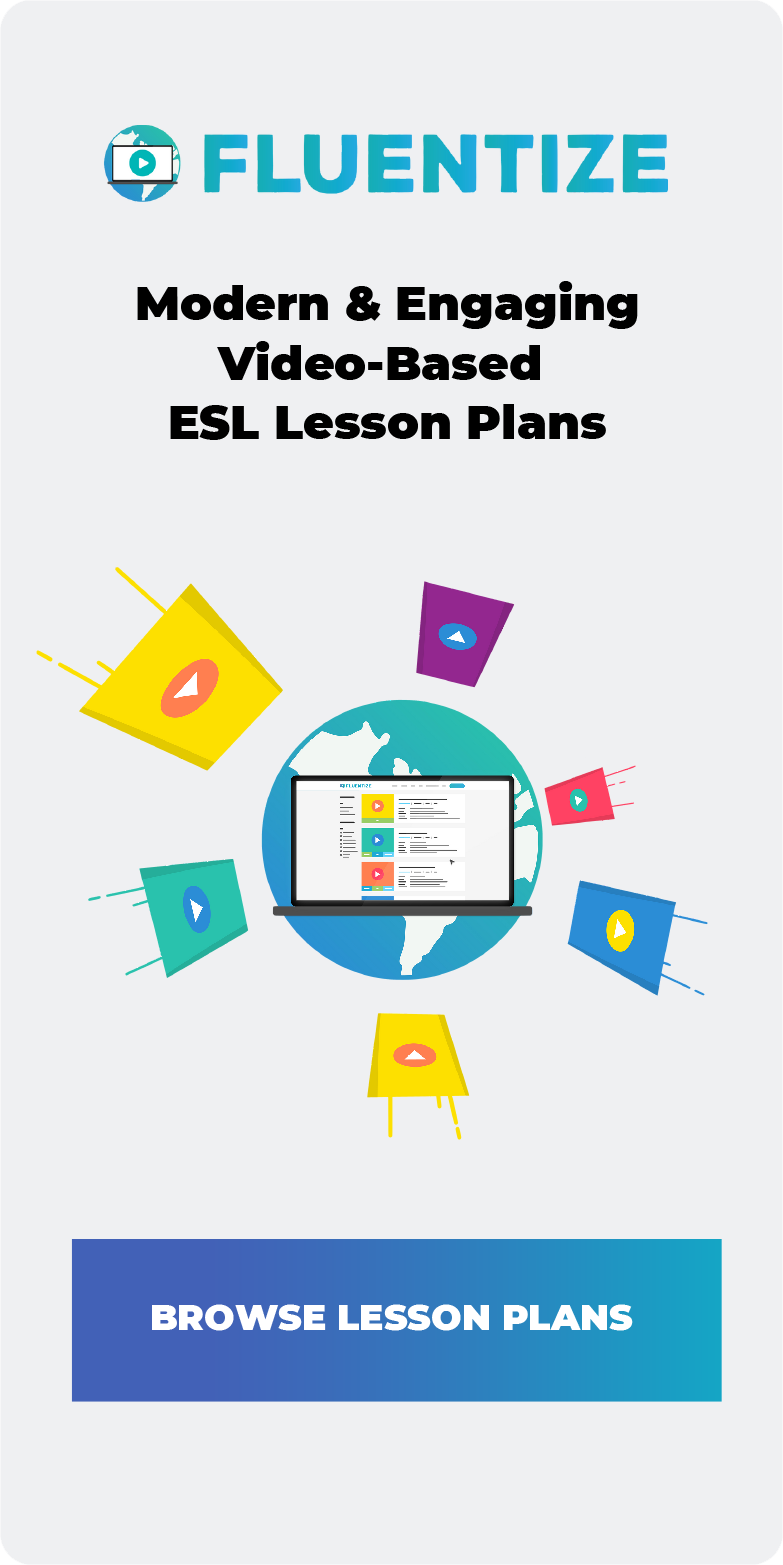When I think about how to teach advanced English, I reflect on my first experience ten years ago. I remember feeling nervous and excited to teach advanced English. My friend’s brother-in-law had introduced the student to me, and we started doing lessons online together. His main focus was to prepare for his move to Australia. Now, he has lived there for about five years.
I felt anxious because I wasn’t really sure how to teach advanced English. However, I accepted the challenge for two main reasons. Firstly, I wanted to push my own limits. And secondly, I was eager to improve my teaching skills.
Despite feeling anxious, I was glad to try a new kind of lesson. It was a step beyond what I was used to. It also gave me a chance to really grow in my teaching career.
Although I had to prepare a lot for each lesson, I was satisfied with the conditions. Our lessons generally consisted of thought-provoking, authentic videos or texts. Then, we’d have discussions about them, and I’d help him express his opinions clearly. After doing lessons together for a year, he wrote me a public testimonial and praised my teaching. I was really grateful and proud to receive such positive feedback.
Moreover, our lessons together made me think about a common misconception about how to teach advanced English. Many teachers and learners think that it’s about building up fancy vocabulary, and becoming a pro at phrasal verbs and collocations.
However, it’s important to take a look at the bigger picture. It’s important to understand what advanced proficiency really means and how complex it is. Advanced learners have traveled a long journey. They’ve mastered a lot of grammar, complex language structures, and tough vocabulary.
But here’s the thing – the heart of this journey goes beyond just improving vocabulary or grammar. It’s really about mastering fluency, building confidence, and applying language thoughtfully in various contexts.
The key ingredients on how to teach advanced English
1) Developing a teaching approach that truly challenges learners
2) Immersing them in real-world communicative scenarios
3) Polishing their English to be effective, functional and articulate.
In this blog, we’ll break those points down further and offer insightful tips on how to teach advanced English.
Do you truly understand how to teach advanced English learners, and what their needs are?
Have you ever noticed the motivation of an advanced English learner? Their motivation is often driven by real-world use. Whether it’s for their careers, studies, or personal goals, their goals are usually practical ones. In addition, they often have specific areas that they need to develop. For example, consider a student who excels in writing but has trouble with articulation. This is a sign to focus more on interactive speaking.
Advanced students benefit from customised content. Essentially, we want content that aligns with their objectives. When teaching advanced English, one size certainly doesn’t fit all. Advanced learners need materials that challenge them and connect them with their experiences.
Plus, we can’t forget the basics when teaching advanced students. Advanced students should interact with both productive (speaking and writing) and receptive (listening and reading) skills. For productive skills, I recommend activities that have students think critically. You should also challenge them to express opinions and ideas clearly. You can do this by using materials like debates, essays, or videos on controversial topics. This is a great way to enhance their language skills and keep them engaged.
If you’re looking for controversial topics to teach advanced English, you can check out some of these thought-provoking lessons by Fluentize:
1. The Business, Hype, & Hardships Of Generative AI This lesson plan focuses on ethical debates when it comes to the use of generative AI.

2. Should We Tax The Rich more? (C1) This lesson plan focuses on debates on a variety of topics regarding taxes.

For listening and reading, it’s important to expose them to a diverse range of genres. Academic lectures, modern literature, or movie scenes are all effective tools. These resources can help train comprehension and analytical skills. Most importantly, this holistic approach can lead to a comprehensive development of all language skills.
A practical example? Try incorporating TED Talks for listening exercises. You can follow them up with group discussions. It’s a simple but great way to engage students with various accents and topics. It will also help them expand their vocabulary and understanding. Advanced students can make impressive progress using these types of resources.
Now, let’s dive into 11 tips on how to teach advanced English. While many of these tips apply to all levels, the ones below are really emphasised for advanced learners. You’ll notice that many of the tips feed off and lead to one another.
1. Adopt a personalised approach
Our first tip on how to teach advanced English is to focus on activities that address specific challenges. This is where teaching really becomes an art.
Explore subtle nuances in grammar

One way to create a personalised approach is to consider advanced grammar workshops based on the students’ needs. These can help explore the finer points of grammar. Sometimes, grammar points are like a puzzle, even for high-level learners. Think about the subjunctive mood or some of those tricky conditional sentences. Sometimes the nuances of these grammar points can be real head-scratchers!
Expand vocabulary
Now, let’s talk about vocabulary expansion. Consider activities in which students get to play with words, like they’re in a linguistic sandbox. Help them explore synonyms, antonyms, and those rare gems that are just right for certain contexts. Remember that time your student mixed up ‘historic’ and ‘historical’? Those can be great learning moments!
Don’t forget pronunciation
Pronunciation workshops are a great idea, especially for those using English for work. It’s not just about teaching students the right pronunciation. It’s about the melody of English, the rise and fall, the stress and intonation. Like when my student from Italy worked tirelessly to master the ‘th’ sound. The progress was music to my ears!
2. Implement collaborative and adaptive teaching
Now, let’s get real. At the advanced level, teaching English is a two-way street. It’s fascinating how widely students’ goals can vary. One student may need to ace a business presentation, while another may want to understand English literature.
Have you ever asked your students about their goals? By having open discussions about their goals and experiences, we can really get to the heart of their needs. This feedback is like gold. It can help you create a personalized and unique teaching plan. Let’s consider the businesswoman preparing for her presentations. Instead of doing generic gap fill exercises, try out some real-life case studies and role-play scenarios. These can make a huge difference. Sometimes, it’s all about being flexible. You can keep students on their toes if you adapt to their needs, mix up methods, and always keep things fresh and relevant.
3. Address fossilization
Here’s an interesting concept about teaching advanced English — fossilization. This is when learners keep making the same errors. It’s a common challenge at advanced levels. It’s like those old habits that just won’t die.
For example, I once had a student who consistently confused ‘affect’ and ‘effect’. Regardless of how many times we reviewed the difference, he still wasn’t using it correctly. These types of errors often become ingrained due to repeated use. Since it doesn’t affect their basic comprehension, teachers are less likely to correct it.

Addressing error correction requires a careful balance. You want to highlight these errors without making the learner feel bad. I’ve found that subtle hand gestures are very effective to indicate mistakes. This is because they don’t interrupt the flow of conversation.
Another way is to create specific exercises that target these errors. Making error correction engaging can be really effective. Immediate feedback helps them to self-correct and gradually unlearn the fossilized mistake. Moreover, these self-awareness mechanisms empower advanced students to adjust their own language use over time.
4. Unlock their passive knowledge
Some students have an extensive vocabulary but rarely get to use it. This is especially true for advanced students. Doesn’t that make you wonder about their potential? How do we bring out this dormant knowledge?
You can do this through discussions, debates, or presentations. Make them based on topics relevant to the students’ interests. This can stimulate the use of passive vocabulary.
This approach engages them in the language and connects them with their personal interests. Focus on activities that require them to think and respond spontaneously. These could be impromptu speeches or improvised storytelling.
For example, ask a student who loves cooking to describe their favourite recipe in detail. You’ll probably find that this leads to a rich use of vocabulary and structures they might not typically use.
Lastly, encourage them to keep journals or participate in online forums in English. This can further activate their passive skills. The key is to provide consistent and varied opportunities for using the language in meaningful contexts.
5. Addressing their knowledge gaps
I noticed that one of my advanced students had a good understanding of English, but struggled with using the passive voice in complex sentences.
Even advanced students can have hidden gaps in their knowledge. These gaps may not be immediately apparent. To identify these gaps, you must be observant and insightful.
Regular assessments are essential for pinpointing areas that need improvement. For instance, a student might express themselves fluently, but misuse idiomatic expressions. When you see these gaps, you can create tailored activities to address them. If a student has a hard time using idioms, incorporating them into role-plays or discussions can be very effective.

Fluentize is a great place to find lesson plans for advanced students. Many of the lessons include role plays, interviews, presentations and much more. For example, this advanced lesson on getting promoted includes a role play in which students use specific idioms to show recognition to others on their team.
Role-plays provide a secure and interactive space for students to practice language. The discussions allow them to use idiomatic expressions in context. This can help students understand how to use them properly.
This hands-on approach not only boosts confidence but also strengthens their grasp of nuanced language aspects. Using authentic materials like news articles, podcasts, or movies is a great strategy. These resources offer real-world contexts, making the learning experience more relevant and engaging. Many resources are available to identify and bridge these knowledge gaps, ensuring that our teaching methods are highly effective.
6. Leverage corpus studies
So, what exactly is a corpus and why is it so important? In simple terms, a corpus (plural: corpora) is a collection of written or spoken texts stored in a database. These corpora are incredibly valuable for advanced learners as they reflect real-world language use.
Analysing a corpus can show us how language is actually used, rather than how we think it’s used. Introducing students to corpus studies can really open their eyes to the dynamic nature of language. It’s not just about memorising rules. It’s about understanding how language evolves and is used in different contexts.
For example, if you look up how the word “innovate” is used in a corpus, you can find a lot of information about it. We can see its common collocates, the typical contexts it’s used in, and how it’s used compared to its synonyms. This real-world application makes language learning more meaningful. It also helps students develop a more nuanced and sophisticated use of English.
And guess what? There are some fantastic free corpus tools online that you can use. For instance, the Compleat Lexical Tutor offers a range of corpora for different needs. English Corpora provides a user-friendly interface for exploring various text databases. And if you want to dive deeper, AntConc lets you analyze your own corpus. You can find tutorials on how to use each of these tools on Youtube.
These tools are not just powerful but also accessible, making them perfect for both teachers and learners. Give them a try!
7. Stay true and transparent

Here’s a story that you might relate to.
Once, during a lesson, a student asked me about the origins of the idiom “spill the beans.” I really had no idea. As a teacher, honesty is important. They can quickly tell if you’re unsure or if you’re trying to bluff your way through a question.
Therefore, it’s essential to own up when you don’t have the answer. This honesty creates a sense of trust and respect between you and your students. By admitting that you need to check something, you’re not only being transparent but also showing that you’re committed to learning alongside your students.
This approach enhances your credibility and demonstrates a commitment to continuous learning. This is a valuable trait in any educator. It turns the teaching environment into a mutual journey of discovery and learning.
Moreover, this makes students feel more comfortable as well. It encourages them to embrace their own uncertainties. It’s a natural and valuable part of the learning process. It creates a classroom culture where curiosity is rewarded and the pursuit of knowledge is a shared endeavour. It reinforces the idea that learning is a lifelong and collaborative journey.
8. Work on emergent language
Here’s the thing about emergent language. You may find that advanced learners often produce unique language during lessons. Imagine it as unexpected gifts that keep on giving. It’s like a chef improvising a new recipe during cooking – these moments lead to teaching moments. They may include interesting phrases, new expressions, or even errors that provide learning opportunities.
As Richard Chinn puts it:
“Emergent language is not just about what students get wrong; it’s about seizing teachable moments created by their output.”
– Richard Chinn
For instance, if a student uses an unusual phrase correctly, seize the moment to explore its usage, variations, and appropriateness. This practice not only enriches their vocabulary but also enhances their understanding of context. It makes the learning process dynamic and responsive, and caters to the immediate linguistic needs and creativity of the learner.
Furthermore, it transforms the classroom into a real-time language laboratory. Students become active co-creators of the learning content. Isn’t it fascinating how these moments can turn a routine lesson into an exciting linguistic exploration?
9. Prepare carefully (but embrace the unexpected)

When you consider how to teach advanced English, preparation is always key. Preparation involves not just reviewing the lesson material, but also anticipating potential questions and areas of interest that might arise.
A practical tip is to always have supplementary materials ready. These can be having additional examples, deeper explanations, or related topics. Being ready leads to flexibility and depth when teaching. Ensure you’re not just familiar with the right answers, but also understand them.
Exploring how the language works use equips you to handle the insightful queries of advanced learners. For example, be prepared to explain why certain grammatical structures are used in specific contexts, or why certain words are preferable over others in certain situations.
Another example could be having a clear explanation for the use of different verb tenses in complex sentences. This level of preparation not only reinforces your authority but also enriches the learning experience.
10. Don’t ignore nuance
Advanced ESL learners are like language detectives — they’re always on the lookout for clues that unlock the subtleties of English. When exploring ways how to teach advanced English, you should always think about the nuances of the language .

Have you ever wondered, for example, why ‘a remote house’ feels different from ‘a secluded house’ or ‘an isolated house’? When it comes to how to teach advanced English, understanding these subtle differences is vital. To address these nuances, use examples that clearly illustrate the distinct connotations and contexts.
For instance, emphasize how ‘remote’ implies distance and inaccessibility, while ‘secluded’ suggests privacy, and ‘isolated’ conveys a sense of being cut off. Practical tips for teaching nuances include using synonyms and antonyms exercises, and encouraging students to create sentences using these nuanced words in different contexts.
This deep dive into language subtleties not only sharpens their understanding but also enhances their ability to express themselves more precisely.
11. Bring plenty of authentic materials into the classroom
Let’s not forget the power of authentic materials in teaching advanced learners. Have you ever considered how social media posts, with their blend of informal language, slang, and cultural references, can be a goldmine for advanced learners? These platforms offer up-to-the-minute content that is both relevant and engaging. Incorporating such materials into lessons can provide an excellent opportunity for students. It enables them to analyse and discuss contemporary language use.
To effectively use these resources, use posts or threads that are related to student interests or current global issues. Then, create activities based on these materials. That could include discussions on language use, cultural references, or even the tone of the posts. This method not only makes lessons more engaging but also helps students understand the nuances and dynamics of real-world English. Remember, the goal is to create a learning experience that mirrors the way English is used outside the classroom. As a result, this prepares them for authentic interactions and communication.
Wrapping it up: How to teach advanced English
Teaching advanced ESL students is really about helping them use English in real life, not just learning the tricky parts of grammar. We need to focus on what each student specifically needs and help them get better at the things they struggle with. This means working on mistakes they keep making and using their knowledge in practical situations.

As mentioned earlier, a great tool for this is Fluentize. We have over 125 advanced level lessons ready to go. Our lessons use real-world examples, so students can see how English is used in everyday situations. In short, our job is to make sure our students can confidently use English and understand its little quirks and subtleties. It’s about giving them the skills they need to communicate effectively in the real world.
We hope you found our tips on how to teach advanced English useful. Let us know about any others you might have in the comments below!
Thanks for reading and happy Fluentizing!










3 thoughts on “How To Teach Advanced English: 11 Tips For Excellence”
Loved this as a c1 and C2 teacher
Thanks for the comment, Ronny! We’re glad to hear you liked the article.
Insightful and practical! This guide simplifies advanced English teaching beautifully-a perfect resource for tutors aiming to elevate their lessons.